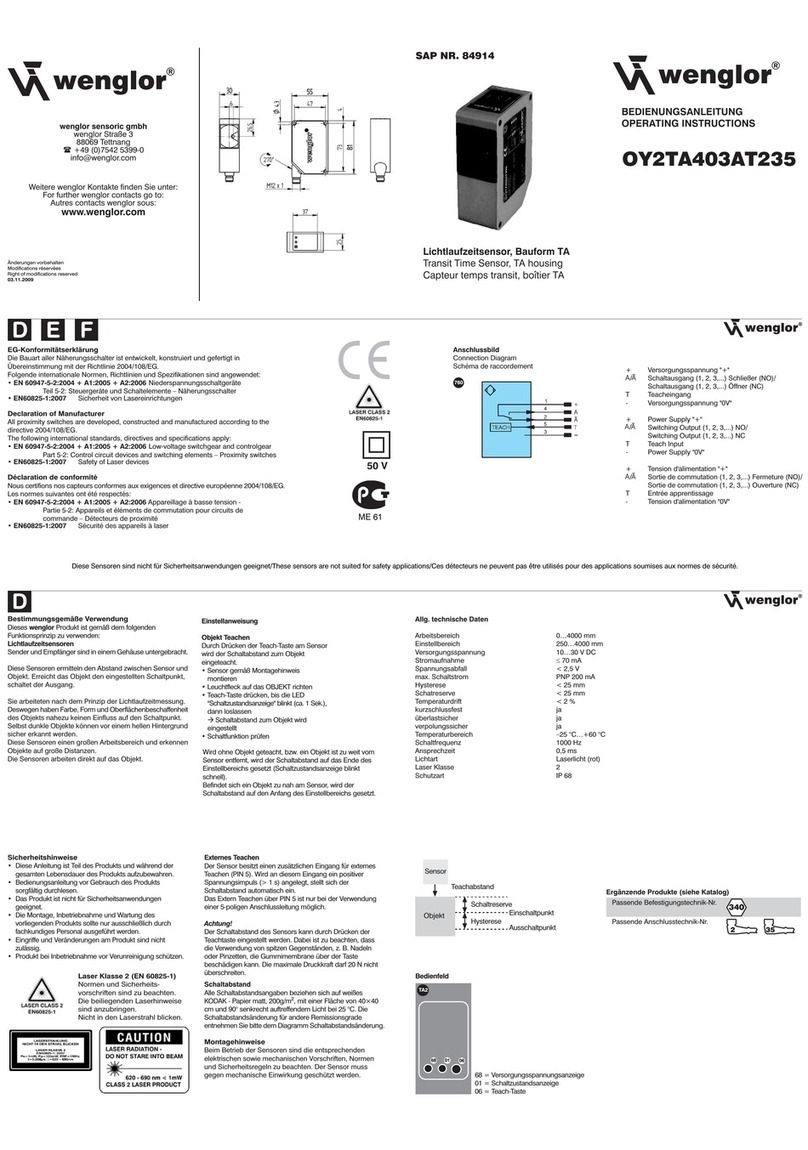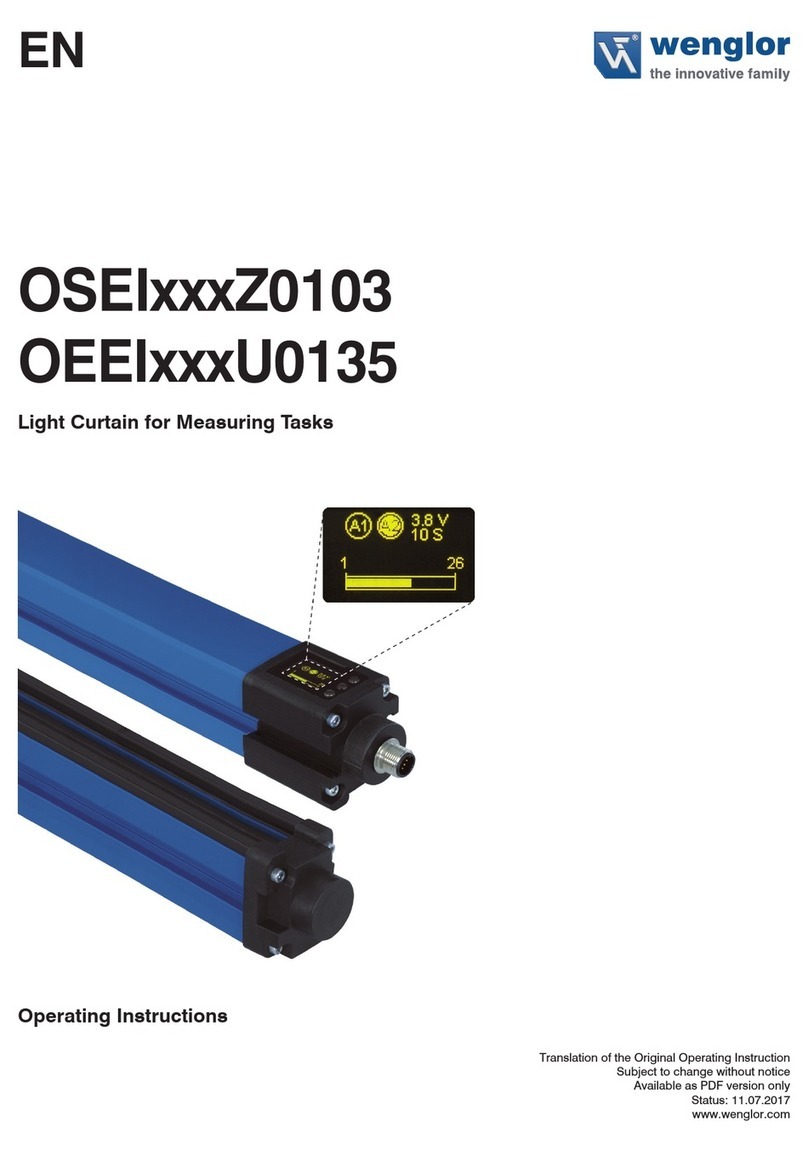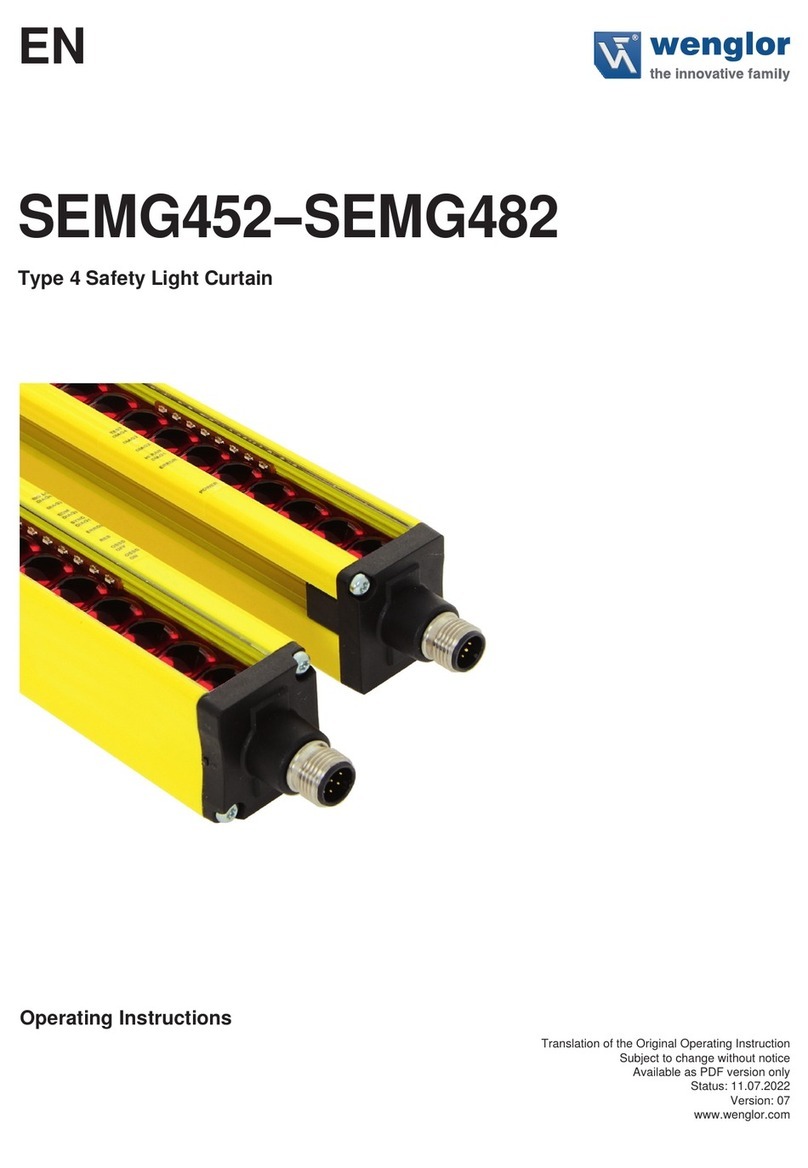
Safety Light Curtain 9
The meanings of the attention-getting words, as well as the scope of the associated hazards, are listed
below:
DANGER!
This word indicates a hazard with a high degree of risk which, if
not avoided, results in death or severe injury.
WARNING!
This word indicates a hazard with a medium degree of risk which, if not avoided,
may result in death or severe injury.
CAUTION!
This word indicates a hazard with a low degree of risk which, if
not avoided, may result in minor or moderate injury.
ATTENTION!
This word draws attention to a potentially hazardous situation which, if not avoided, may
result in property damage.
NOTE!
A note draws attention to useful tips and suggestions, as well as information regarding
efficient, error-free use.
1.4 Limitation of Liability
• The product has been developed in consideration of the current state-of-the-art, as well as applicable stan-
dards and guidelines. Subject to change without notice.
• A valid declaration of conformity can be found at www.wenglor.com in the product’s separate download
area.
• wenglor excludes all liability in the event of:
– Non-compliance with the instructions,
– Installation errors,
– Use of the product for purposes other than those intended,
– Use by untrained personnel,
– Use of unapproved spare parts and accessories,
– Unapproved modification of products.
These operating instructions do not imply any guarantee from wenglor with regard to the described proce-
dures or specific product characteristics.
wenglor assumes no liability for printing errors or other inaccuracies contained in these operating instruc-
tions, unless wenglor was verifiably aware of such errors at the point in time at which the operating instruc-
tions were prepared.
1.5 Copyrights
• The contents of these instructions are protected by copyright law.
• All rights are reserved by wenglor.
• Commercial reproduction or any other commercial use of the provided content and information, in particu-
lar graphics and images, is not permitted without previous written consent from wenglor.































